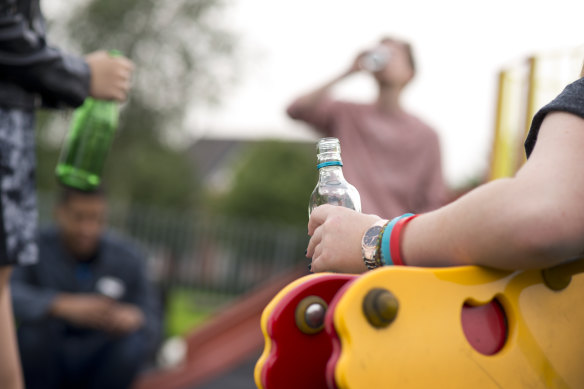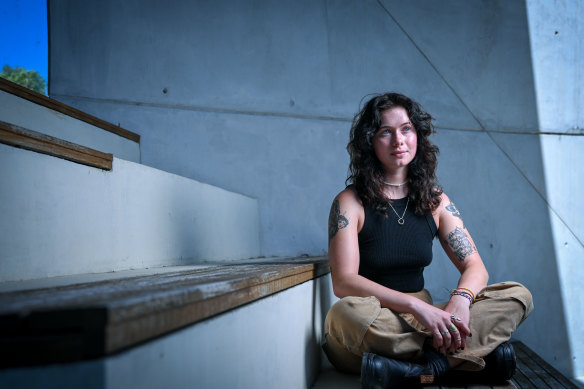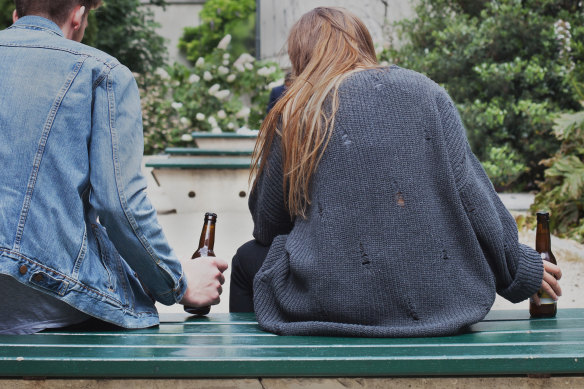Underage teens from wealthy postcodes drink significantly more than peers from poorer areas

Key points
- New research reveals teenagers from wealthier postcodes consume significantly more alcohol than their peers from poorer areas.
- Young people who speak English as their first language reported being engaged in more frequent risky drinking.
- Australians aged 18 to 24 are the most likely age group to consume 11 or more standard drinks on a single occasion.
Young people from affluent suburbs, particularly those who are underage, consume significantly more alcohol than their peers from poorer areas.
That’s the finding of new research from La Trobe University, which reveals Australians aged 14 to 17 from wealthier postcodes consume an average of 46 more drinks over the course of a year than their counterparts in disadvantaged areas.
New research reveals Australians aged 14 to 17 from wealthier postcodes drink more than their counterparts in disadvantaged areas.Credit:iStock
The trend is also apparent, but less pronounced, for people aged 18 to 24, with those in wealthier postcodes consuming an average of 14 more standard drinks per year.
Study co-author Dr Amy Pennay, who works at the university’s Centre for Alcohol Policy Research, suspects the affordability of alcohol and different social norms are fuelling the divide.
“Alcohol is more affordable for people with access to resources,” Pennay said.
“I’m also wondering if there’s something socially and culturally going on in particular friendship circles, schools or areas that might promote or enable drinking as being normal and a positive thing.”
Households in the most affluent suburbs earn about $2131 per week, while those in the most disadvantaged postcodes brought home around $1048. The data was drawn from more than 1500 responses to the 2019 National Drug Strategy Household Survey.
The researchers found that young people who spoke English as their first language reported drinking more and being engaged in more frequent risky drinking, which involves consuming five or more standard drinks in one session.
Young Australians in regional and remote areas drank more on average than their city peers.
While there has been a significant decrease in young people engaged in risky drinking over the past two decades, early research suggests this has not coincided with a reduction in alcohol-related harm.
Bug Cosgrove, an international student at Monash University, started drinking when she was 14. She remembers sneaking vodka into her Californian boarding-school dorm and sharing it with friends.
“A lot of people ease into it, but I went hard and fast,” Cosgrove, now 22, recalls.
Alcohol played a constant presence in her life, following her to Europe, where she worked as a guide who took backpackers on drinking tours through Budapest, and then to Australia.
But 16 months ago, the global studies student who now lives in Prahran in Melbourne’s south-east, realised she no longer enjoyed the sensation of drinking alcohol.
Bug Cosgrove is among a growing number of young people who have quit drinking alcohol.Credit:Eddie Jim
She had been blacking out after a few beers, a “terrifying” experience that she discovered was due to a congenital liver condition.
Cosgrove found it easier to give up alcohol altogether than to cut back. It’s a decision she doesn’t regret.
“I can go out sober and enjoy myself just as much, and the next day I can wake up early,” she said. “I think it’s really helped my understanding of who I am and how I relate to people.”
Cosgrove suspects young people from more affluent postcodes drink more at a younger age because their parents are more distracted.
Eleanor Costello, evidence manager at the not-for-profit Alcohol and Drug Foundation, said around one-third of underage drinkers accessed alcohol from their parents, while a third obtained it from their older siblings and peers.
She said when parents allowed their underage children to have sips of alcohol, it conditioned them to be drinkers later in life.
“The longer we can delay initiation, the less likely people are to have entrenched harmful use later in life … you get better at coping, your brain has had more chance to develop, you get better at emotional regulation.”
Costello said while it was encouraging to see a drop in drinking rates among young people, she was concerned about an increase in risky drinking behaviour among those who continued to consume alcohol.
Around one-third of underage drinkers accessed alcohol from their parents, the Alcohol and Drug Foundation said.Credit:iStock
Australians aged 18 to 24 are the most likely age group to consume 11 or more standard drinks on a single occasion.
“That’s a concern because young people are more vulnerable to injury, they have less experience at drinking and managing the effects of drinking, and are more vulnerable to being in situations where they are likely to get hurt.”
The Morning Edition newsletter is our guide to the day’s most important and interesting stories, analysis and insights. Sign up here.
Most Viewed in National
From our partners
Source: Read Full Article


